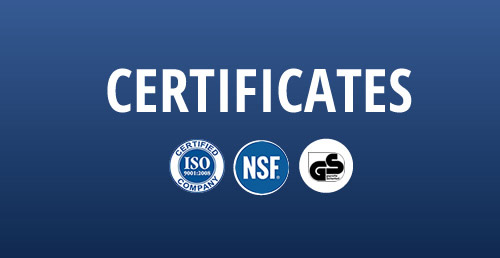structural hex bolts
Understanding Structural Hex Bolts Essential Components for Engineering and Construction
Structural hex bolts are vital fastening components widely used in construction and engineering industries. Characterized by their hexagonal heads, these bolts are designed to provide strong and reliable connections, making them integral to the integrity of many structures. This article delves into the features, applications, and advantages of structural hex bolts, shedding light on why they are a preferred choice in various engineering projects.
Design and Features
Structural hex bolts are typically made from high-strength materials, such as carbon steel or alloy steel, often coated with protective finishes like zinc plating to enhance corrosion resistance. The hexagon shape of the head of these bolts enables the use of a wrench, ensuring a secure grip during installation. The design facilitates the application of higher torque, which is crucial in achieving proper tension and preventing loosening over time.
These bolts come in various sizes, grades, and lengths, classified according to standards set by organizations like ASTM (American Society for Testing and Materials). Each grade indicates the bolt's tensile strength, ductility, and resistance to yield, ensuring that engineers can select the appropriate bolt type for specific load-bearing requirements.
Applications
The applications of structural hex bolts are diverse, spanning numerous sectors, including construction, manufacturing, and automotive industries. In construction, they are commonly employed to secure steel beams, braces, and other structural elements in both residential and commercial buildings. Their reliability is critical in scenarios where safety and structural integrity are paramount.
structural hex bolts

Additionally, structural hex bolts play a crucial role in machinery assembly, where they fasten components subject to vibration and dynamic loads. In the transportation sector, they are used extensively in bridge construction and infrastructure development, connecting major components that bear heavy traffic loads.
Advantages
One of the primary advantages of structural hex bolts is their strength. They are specifically engineered to withstand significant tensile and shear forces. This attribute is especially important in structural applications, where failure due to inadequate fastening can lead to catastrophic outcomes.
Another significant benefit of these bolts is their ease of use. The hexagonal head allows for rapid assembly and disassembly, saving time and labor costs during installation and maintenance. This ease of handling also makes them accessible for DIY projects and smaller construction tasks.
Furthermore, the availability of various grades and sizes thereof provides flexibility for engineers and contractors. They can choose the right specifications based on load requirements and environmental conditions, ensuring optimal performance in a range of applications.
Conclusion
In summary, structural hex bolts are indispensable components in construction and engineering. Their robust design, versatility, and ease of use make them a go-to choice for professionals in the industry. Understanding the features and applications of these bolts is crucial for engineers and contractors, enabling them to make informed decisions that prioritize safety and structural integrity in their projects. As technology and materials continue to advance, the role of structural hex bolts will undoubtedly evolve, maintaining their significance in the ever-changing landscape of construction and engineering.
-
Weatherproof Plastic Expansion Anchors for OutdoorLitabaJun.06,2025
-
Sustainability in the Supply Chain: Eco-Friendly TEK Screws ProductionLitabaJun.06,2025
-
Load-Bearing Capacity of External Insulation FixingsLitabaJun.06,2025
-
Double Head Bolts: Enhancing Efficiency in Industrial MachineryLitabaJun.06,2025
-
Corrosion Resistance in Chipboard Screws: Coatings for Wholesale DurabilityLitabaJun.06,2025
-
Butterfly Toggle Bolts : Enhancing Structural ResilienceLitabaJun.06,2025
